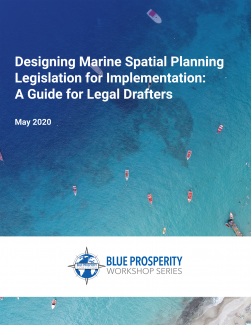Designing Marine Spatial Planning Legislation for Implementation: A Guide for Legal Drafters and Training Videos
To date, little attention has been paid to how countries can give their marine spatial planning initiatives the force of law.
To date, little attention has been paid to how countries can give their marine spatial planning initiatives the force of law.
(Washington, D.C.)— Countries are increasingly turning to marine spatial planning to assess and organize present and future uses of their ocean environments. While resources on how to create a marine spatial plan are plentiful, little attention has been paid to how countries can give their marine spatial plans the force of law.
Today, many dispersed data systems map environmental information and/or provide links to certain government documents. However, there is no comprehensive, map-based data system that allows access to NEPA documents and information.
“Geospatial NEPA” is designed to facilitate access and information sharing by aggregating NEPA documents and geographic data in a map-based data system. Multiple variables, documents, and data layers could be included in the system.
The National Environmental Policy Act (NEPA) requires agencies to analyze the environmental impacts of major federal actions that will significantly affect the quality of the human environment. Agencies must consider the environmental consequences of proposed actions or projects, evaluate possible alternatives, and disclose information to the public before they issue final permits or other approvals.
Please feel free to contact us if you would like additional materials or if you have any questions about any of our projects or publications.
Sofia O'Connor
Director. Ocean Program
(202) 939-3824
oconnor@eli.org

Ocean and coastal states around the world are increasingly seeking to better utilize and benefit from their ocean environments, which can be vast in comparison to their land areas. Conflicting human uses, a changing climate, and a desire to ensure long-term sustainability compound the challenge to grow a robust “blue economy.” Consequently, countries are turning to marine spatial planning as a comprehensive management tool to assess and organize present uses of their ocean environments and map for future uses.
Marine spatial planning is an emerging ocean management tool that plans for and allocates multiple uses of the marine environment in a coordinated and spatially-explicit manner. The need for MSP has emerged out of the realization that most nations currently manage their marine environment on a sector-by-sector basis, which can result in conflicts among sectors and can also have cumulative, harmful impacts on the surrounding ecosystem.
“Geospatial NEPA” is designed to facilitate access and information sharing by aggregating NEPA documents and geospatial data in a map-based data system. ELI is developing the concept and drafted a report on approaches, policies, and possibilities for this new vision of NEPA review.